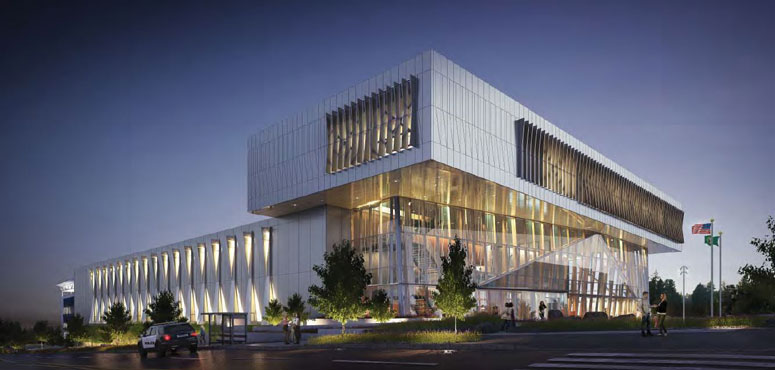
The Seattle police are in the news again. This time for a lavish new $160 million North Precinct building that The Seattle Times’ Brier Dudley claims is the most expensive precinct building in United States history. The epic structure contains a
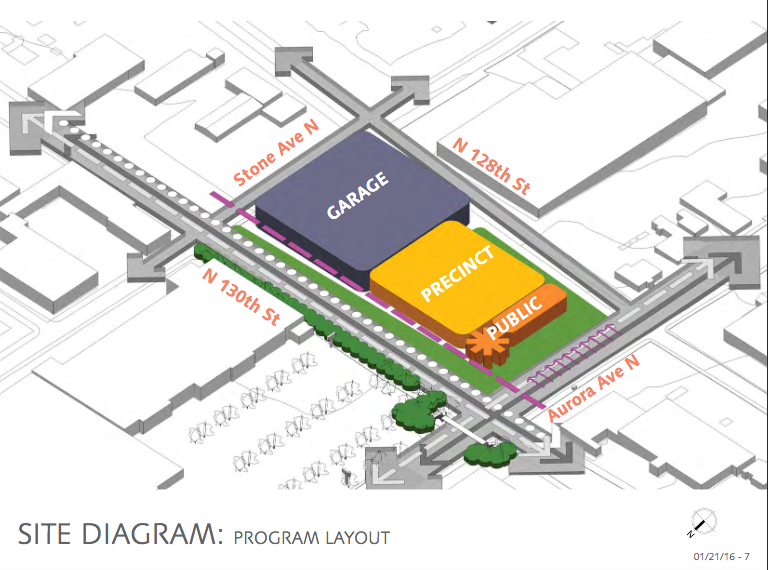
Nonetheless, the Murray administration is pushing the project and using a novel funding mechanism to get there. Josh Feit reports Murray is hoping to use the apparent profit of $22 million from selling the city-owned Pacific Place parking garage to help fund the project. As Feit reports:
Murray’s announcement went on to say he planned to spend the proceeds from the sale (after paying off the remaining debt) on a new North Precinct police station.
But to use government jargon, I don’t quite get the nexus there.
If we’ve been losing money subsidizing parking downtown for 20 years, wouldn’t it make more sense to spend the money (that we’re getting back now after unloading this car-friendly investment) on a project to help get people downtown, not cars?
Feit is dead on about the fishy connection between selling a Downtown mall parking ramp to fund a North Seattle parking ramp that happens to be attached to a police precinct. Can’t stress enough that the building is 70% parking.
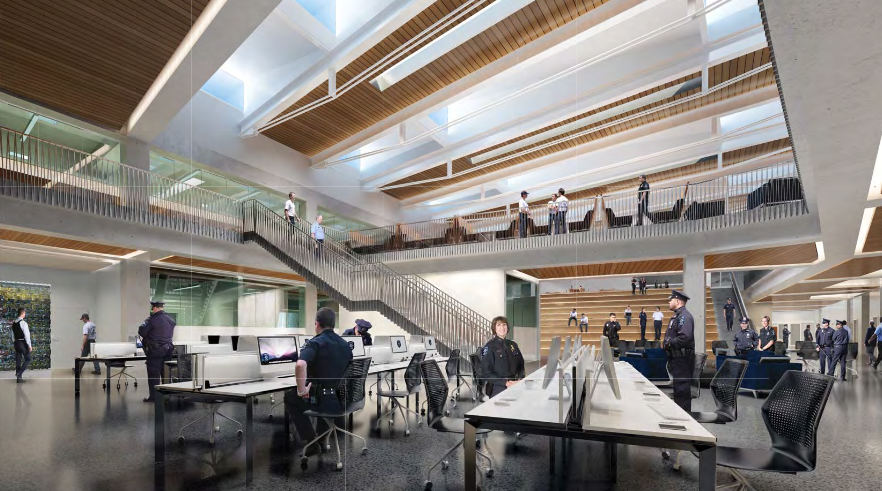
To make matters worse, some renderings seem to indicate aesthetically the structure is Nineties mall meets a Soviet bunker. The City Council reviewed the North Precinct plans Wednesday morning during the Gender Equity, Safe Communities & New Americans Committee (video here) where the public got a chance to weigh in and opponents hurled “militaristic bunker” at the project; although, City staff indicated that the building is not functionally a bunker because it is not bombproof. That said, the building is clad in ballistics-resistant glass and equipped with a firing range in the basement, which they plan to use for de-escalation training as dictated by the Seattle Police Department’s 2012 settlement with the Department of Justice, stemming from a pattern of excessive force. Apparently, firing ranges are necessary to do de-escalation training.
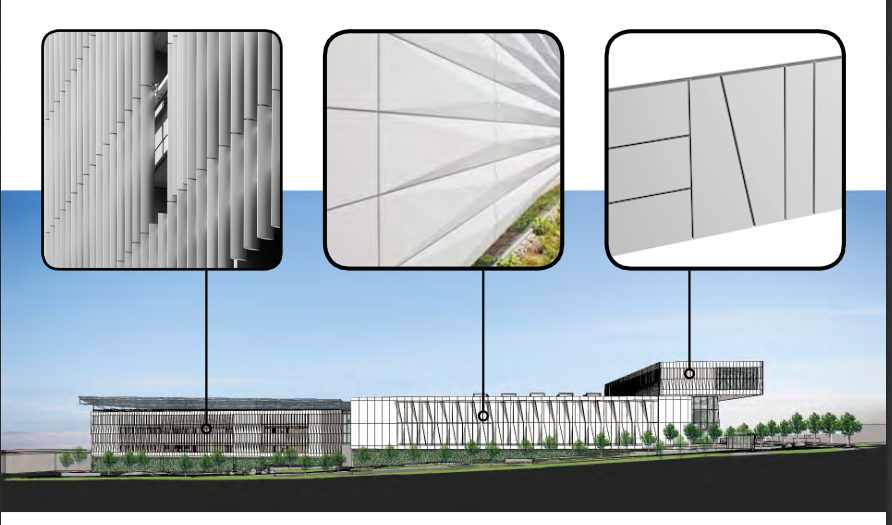
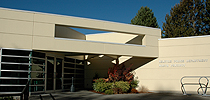
Meanwhile, the existing North Precinct building at 10049 College Way was built just 32 years ago for a staff of 154 and though overcrowded it seems to be functional. Rumor has it the City is toying with turning the old precinct into a park. What to do with the old building could end up being a controversy of its own.
Let’s stay focused on the controversy at hand. How does this building cost $160 million? Is it the parking? Why do we need a quarter million square feet of parking? Can’t precinct staff take public transit or carpool to work? Shouldn’t government employees be leaders in this regard? Can we reduce the need for squad cars by having officers patrol on foot or on bicycle? The size of the parking garage would suggest that the City (or at least SPD) is doubtful on all counts, but maybe they’re just overbuilding to be safe.
The huge parking garage also points us to another inconvenient fact. In 2014, Nate Silver reported Census Bureau data showing just 12% of Seattle police officers live within the city they serve. This is a particularly low rate, even for a country where in major cities, 60% of police officers live outside of the city they serve. Police officers tend to be suburban commuters. Hopefully, the City seeks to change that as they hire new officers and perhaps create incentives for existing officers to live within the city. Building more workforce housing would help.
At Wednesday’s meeting, some councilmembers seemed skeptical about the ballooning price tag of the project, as The Stranger reported:
Lorena González and Mike O’Brien both asked a number of pointed questions about how certain price points were reached—the officials seated around the table did not have the answers ready. The city’s head budgeter, Ben Noble, said that an earlier $88 million estimate was carelessly calculated.
“It’s unacceptable when we’ve underestimated by almost 50 percent,” said González. “I don’t think that’s responsible or transparent to the public.”
Seattle Police Chief Kathleen O’Toole tried hard to sell the City and the Council on the deluxe precinct: “My hope is this will be the community’s police station. I could see farmers markets there… Whatever the community wants—it’s their space.” Note that designs also mentioned yoga classes. It could be a real bohemian paradise! Should the City be digging around in the couch cushions for $160 million to build this thing after all?
Doug Trumm is publisher of The Urbanist. An Urbanist writer since 2015, he dreams of pedestrian streets, bus lanes, and a mass-timber building spree to end our housing crisis. He graduated from the Evans School of Public Policy and Governance at the University of Washington in 2019. He lives in Seattle's Fremont neighborhood and loves to explore the city by foot and by bike.

